When you first lay your eyes on a white tiger, it’s as if you’ve been transported into a world of pure magic. Their opulent snow-white fur and ice-blue eyes against the earthy backdrop of the wild, make them nothing short of a living, breathing marvel. Now, what’s not to love about that?
White tigers are not a different species, nor a subspecies, but rather, a unique coat color variation caused by a recessive gene that occurs in the Bengal tiger (Panthera tigris tigris). This characteristic doesn’t change their species, but it sure does make them stand out!
In the following sections, we’ll dive deeper into the world of these magnificent creatures, exploring their genetics, their role in conservation, the ethical implications of their breeding, and what the future holds for them. After all, knowledge and understanding are the first steps in protecting these incredible animals and ensuring their survival. As much as I wish we could end this introduction on a positive note, the truth about white tigers is a lot more complex and somewhat disheartening. But let’s not get ahead of ourselves. Sit tight, and let’s unravel this captivating tale together.
History and Folklore

Now, if we step into the time machine and travel back a few centuries, we find the first accounts of white tigers in Indian folklore and historical records. The Maharajahs of old had a special place for these exotic animals in their royal hunting parties, both for their rarity and the awe they inspired. The first white tiger captured in the wild was a magnificent male named Mohan, taken by the Maharaja of Rewa in 1951. Mohan fathered several cubs and is considered the progenitor of many of today’s captive white tigers.
Despite their royal historical status, it’s important to clarify that white tigers are exceptionally rare in the wild. The last confirmed sighting was sadly way back in the 1950s. Today, virtually all known white tigers are found in captivity, whether in zoos, private collections, or wildlife parks. They’re distributed globally, but unfortunately, you won’t have much luck finding one during your next jungle safari.
Tigers as a Whole: Diversity and Conservation
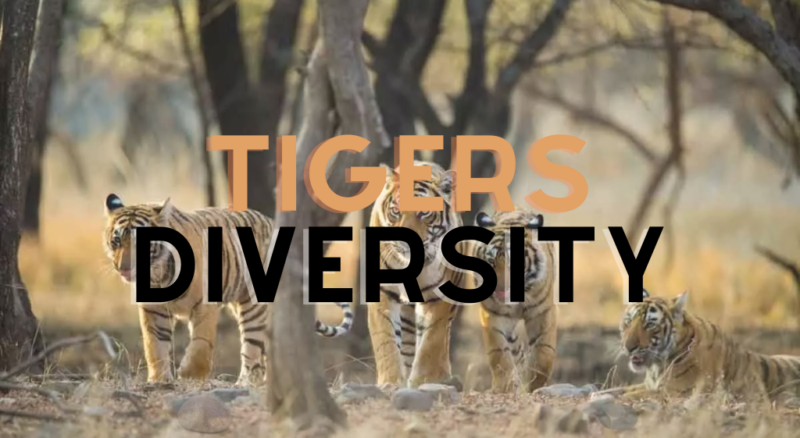
Tigers. Powerful, elusive, and magnificently stunning. Yet, when you say ‘tiger’, people often think of one single entity — the iconic orange-coated, black-striped feline. However, there’s so much more to the story. The world of tigers is a grand tapestry of diversity and each species weaves its unique thread into it.
There are six living subspecies of tigers under the genus Panthera: the Bengal, Indochinese, Malayan, Siberian, South China, and Sumatran tigers. Each subspecies is distinct, boasting its unique set of characteristics, distribution, and survival challenges. The powerful Siberian tiger, for instance, is the largest of the bunch and roams the frigid Russian Far East. On the other hand, the Sumatran tiger, the smallest subspecies, prowls the dense tropical forests of the Indonesian island of Sumatra.
Geographically, tigers once roamed far and wide across Asia, from the icy Siberian taiga to the sultry mangrove swamps of the Sundarbans, and from the snow-capped peaks of the Himalayas to the balmy Indonesian archipelago. Alas, their range has been drastically reduced now, a sad testament to the relentless pressures of habitat loss, poaching, and human encroachment.
So where does our snow-white wonder fit into this rich tapestry of feline diversity? Well, as I’ve mentioned earlier, the white tiger isn’t a separate species but a genetic variant of the Bengal tiger. It’s like having a blond-haired person in a family predominantly of brunettes. However, unlike the naturally occurring variations in human hair color, the white coat of these tigers is an incredibly rare phenomenon, seen only when two Bengal tigers carrying the same recessive gene for white coloration mate.
One might wonder, in a world where biodiversity is increasingly being celebrated, why the emphasis on a single genetic variant like the white tiger? Well, the story of the white tiger goes beyond its beauty. It provides a sobering reflection of the challenges we face in animal conservation, breeding ethics, and the complex relationship between man and the wild. They symbolize both our fascination with the natural world and the ethical conundrums our fascination often leads to.
The Genetics
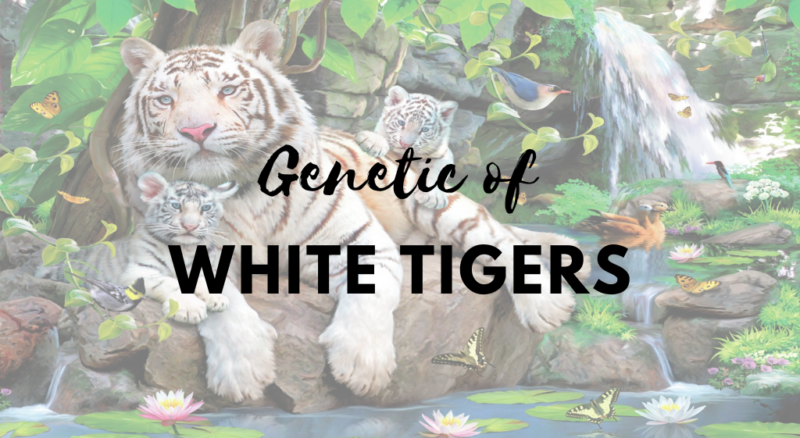
Now let’s get to the heart of what sets white tigers apart: their genetics. You see, every living organism has a unique genetic makeup that contributes to its physical appearance. In the case of white tigers, their mystical white fur, icy blue eyes, and dark chocolate stripes are all due to one particular recessive gene — a gene that’s overshadowed when combined with a dominant counterpart but expresses itself when two of its kind meet.
This gene, the color inhibitor or ‘chinchilla’ gene, is present in Bengal tigers. When a cub inherits this gene from both parents, voila! A white tiger is born. However, since it’s a recessive gene, both parents must either be white tigers or carry the white gene, which makes the occurrence incredibly rare in the wild.
So how are we seeing so many of them, especially in zoos and wildlife parks, you ask? Well, that’s where human intervention comes into play. White tigers have been intentionally bred in captivity, often through a process called inbreeding (but more on that later), to ensure the presence of this recessive gene and maintain the white coat color that draws crowds worldwide. It’s an ethical dilemma that we’ll delve into in further sections.
Appeal of White Tigers

The allure of the white tiger is undeniable. That snowy coat gives them a certain ‘x-factor’, an exotic allure that has led them to become star attractions wherever they’re displayed. They feature prominently in literature, logos, and even as royal mascots — a symbol of power, majesty, and beauty. This fascination, however, is a double-edged sword. On one hand, they attract much-needed attention and funds towards conservation efforts. On the other, they’ve been exploited and commodified in a way that has serious implications on their wellbeing and survival.
Now, don’t get me wrong. I’m all for celebrating the uniqueness of the white tiger. Their beauty, their rarity, and the way they make us marvel at the genetic lottery of nature. But, it’s also crucial we do it responsibly and ethically, ensuring their health and genetic diversity isn’t compromised. Our fascination with them shouldn’t come at the cost of their wellbeing, which unfortunately, is where we seem to be heading.
Inbreeding in White Tigers
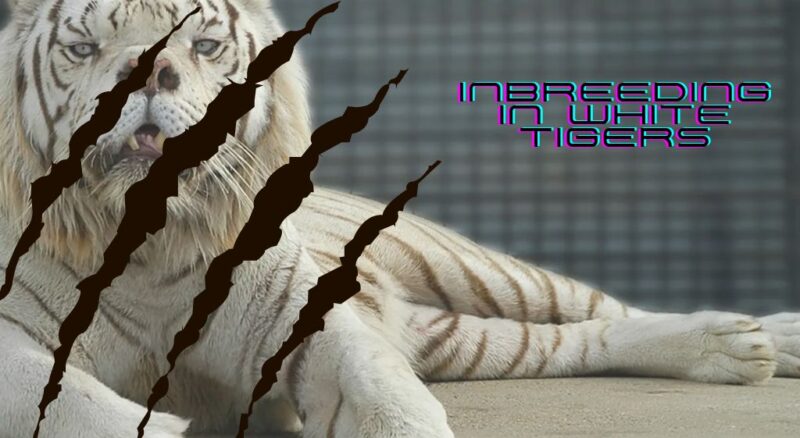
Now that we’ve touched on the magical genes that create these white wonders, it’s time to delve into a murkier territory – inbreeding. A term often used with a hint of disdain and concern, inbreeding refers to the mating of individuals who share common ancestry, thus increasing the chance of offspring inheriting identical forms of a gene from both parents.
In the animal kingdom, genetic diversity is crucial for survival. It not only provides resistance to diseases but also promotes healthier and stronger species that can better adapt to environmental changes. So, it’s a common rule of thumb: the more diverse the gene pool, the better the chances of survival. Inbreeding flies in the face of this rule, increasing the chance of harmful genetic conditions being passed down to offspring.
Now, you might ask, “Why would anyone encourage inbreeding in white tigers, then?” The answer, unfortunately, lies in their allure. The white tiger’s unique coloring is a big draw, and since it’s linked to a recessive gene, breeders often resort to inbreeding to ensure the trait gets passed on. Parents, siblings, or other close relatives that carry the white gene are bred together, increasing the likelihood of producing white cubs.
Yet, this method comes with severe consequences. You see, recessive genes aren’t always harmless coat color determinants. They can also harbor deleterious traits, which ordinarily stay hidden in a diverse gene pool. However, when two similar genomes intertwine through inbreeding, these harmful traits can emerge, resulting in a host of genetic health problems.
Indeed, the story of captive white tigers is marred by such issues. From physical deformities like cleft palates, crooked backbones, and hip dysplasia, to neurological problems and reduced life expectancy, the cost of their snowy coats is much higher than we’d like to admit.
We humans have a habit of playing with nature’s rules, often without fully considering the consequences. The story of the white tiger’s breeding is a stark reminder of the importance of genetic diversity and the dangers of prioritizing spectacle over the wellbeing of these beautiful creatures. It’s a lesson we need to take to heart, especially as we look to the future of the white tiger and its place in the world.
Health Issues and Bottlenecked Populations
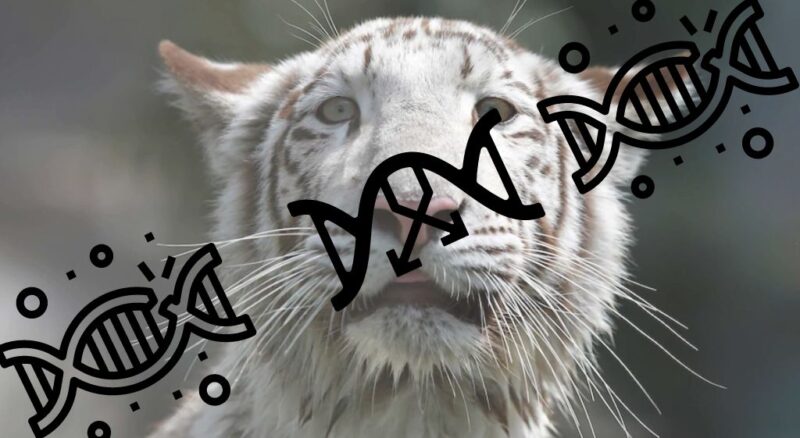
As we delve deeper into the world of white tigers, we encounter more complex issues — health problems and genetic bottlenecks. While both are intertwined with inbreeding, they each have their own set of implications that need to be understood.
As I mentioned earlier, inbreeding doesn’t come without risks. The repeated mating of closely related individuals tends to surface harmful recessive traits that could otherwise be masked in a diverse gene pool. In the case of white tigers, these genetic disorders can manifest in several ways. Some are physically apparent, such as crossed eyes (strabismus), club feet, or cranial deformities. Others, like immune deficiencies or neurological disorders, are less visible but equally harmful. Then there are fertility issues and a general reduction in lifespan. The stark truth is that while white tigers captivate us with their snowy coats, they may be silently suffering from a multitude of health issues.
So, what’s a bottleneck? In genetics, a ‘bottleneck’ refers to a sharp reduction in population size due to environmental events or human activities, leading to a decrease in genetic variation. Think of it as a real bottleneck: it starts wide (representing a diverse population), suddenly narrows (indicating a drastic population decline), and then widens again (as the population grows from a small number of survivors).
When a population undergoes a bottleneck, it loses a significant amount of its genetic diversity. This means less variation in the gene pool and a higher risk of inbreeding and the associated problems I’ve just mentioned. For white tigers, the genetic bottleneck happened when we started breeding them in captivity, often from a limited number of individuals.
While the story of the white tiger is a prime example, it’s far from the only one. There are many species out there, like the cheetah or the Florida panther, that have faced genetic bottlenecks due to habitat loss, hunting, or other human activities. These populations, too, are struggling with reduced genetic diversity, leading to similar health and survival challenges.
In essence, the health issues and the bottlenecked population of white tigers are intrinsically linked to the inbreeding practices. They show us that while genetic anomalies like the white tiger may seem enchanting, the reality beneath is a reminder of the delicate balance of nature and the repercussions when it’s disrupted.
Ethical Considerations and Responsible Breeding
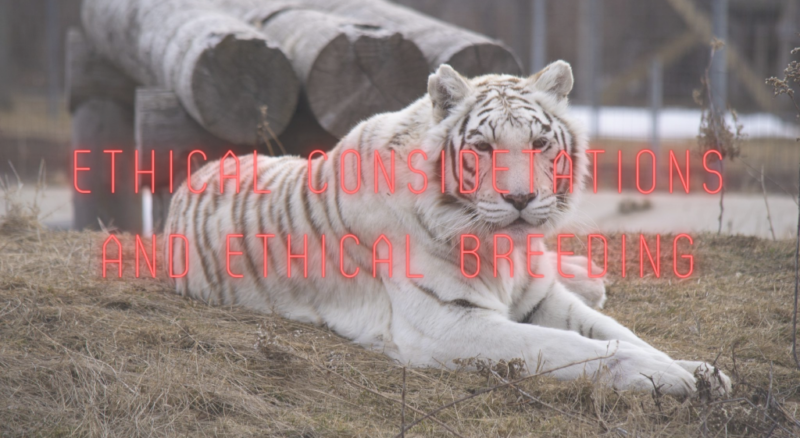
Alright, it’s time to wrestle with the ethical elephant in the room. It’s clear from everything we’ve discussed that the existence of white tigers in captivity, while beguiling, raises some serious ethical questions. Should we continue to breed white tigers, knowing the risks and potential suffering involved? How can we balance the desire for these beautiful creatures with our responsibility to promote healthy and diverse animal populations?
The debate over breeding white tigers in captivity isn’t a new one. On one side, there’s the argument that the presence of these majestic creatures raises awareness about the plight of their orange counterparts in the wild, drawing attention and funding to conservation efforts. Additionally, some claim that selective breeding can be done responsibly, with close monitoring of genetic health.
Opponents, however, point to the myriad health issues and shortened lifespan linked to the inbreeding practices used to maintain the white coat trait. They argue that it’s simply unethical to breed animals knowing they will likely suffer as a result. Moreover, they contend that focusing on white tigers can detract attention and resources from conserving the wild populations of standard Bengal tigers and other endangered tiger subspecies.
So, where does this leave us? Is there a middle ground? Perhaps responsible breeding can provide some answers. With advances in genetic testing and monitoring, it may be possible to maintain genetic diversity in captive white tiger populations. This would involve careful selection of mating pairs, regular health checks, and a commitment to prioritize health over appearance.
Yet, even with these efforts, the ethical concerns remain. Zoos and other institutions housing white tigers have a critical role to play here. They must foster a culture of transparency about the origins and genetic health of their white tigers. It’s equally crucial for them to educate the public on the realities behind the white tiger phenomenon, ensuring that our fascination with these animals doesn’t inadvertently support practices that harm them.
As is often the case with ethics, there are no easy answers. However, one thing is clear: the status quo needs to change. As we look to the future of white tigers, it’s essential we do so with both our hearts and our minds, ensuring that our admiration for their beauty doesn’t compromise their wellbeing.
The Future of White Tigers
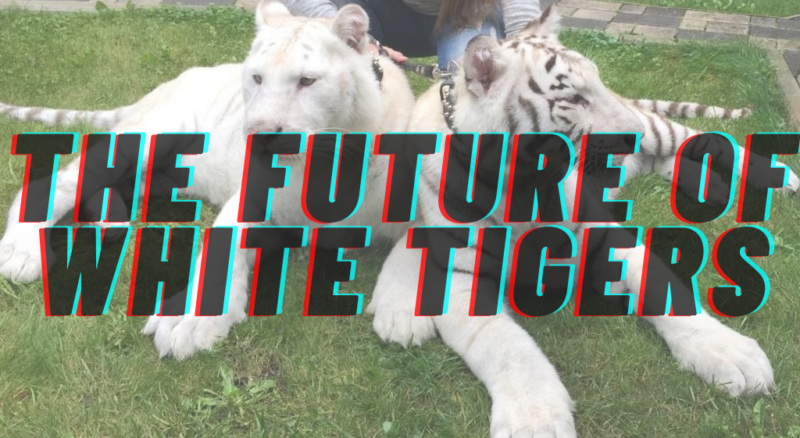
As we venture further into the 21st century, it’s vital to ponder over the future of white tigers. Their current predicament, rife with ethical and genetic complexities, prompts a more significant question: What does the future hold for these stunning creatures? How can we ensure that they exist not just as spectacles in captivity, but as genetically healthy animals that can contribute to the diversity of the tiger gene pool?
Let’s face it; the challenges are substantial. The rarity of the white gene, combined with the health issues associated with inbreeding, suggests a precarious future. Long-term sustainability and genetic health are genuine concerns. This is why it’s crucial that any conservation effort we undertake is focused on more than just preserving their aesthetic appeal. We need to consider their genetic health, ensuring a diverse and robust gene pool that can better equip these creatures for survival.
Moreover, public perception and education play an essential role. The narrative that white tigers are simply a natural wonder that we’re lucky to witness needs to evolve. We need to understand and acknowledge the truth behind their existence, the genetic manipulation, and the health problems they face as a result. And while we admire their unique beauty, it’s crucial to remember that every white tiger in captivity is a representative of its species and its struggles.
Promoting responsible breeding, prioritizing genetic health, discouraging inbreeding, and transparent communication about their genetic history should be our priority. Every tiger, white or otherwise, deserves a chance to live a healthy life.
The road ahead may be fraught with obstacles, but there’s hope. With the right approach and a commitment to ethical practices, we can help shape a future where the white tiger isn’t just an attraction but a testament to the marvels and complexities of genetics, existing as part of a healthy, diverse, and sustainable tiger population.
FAQ
What’s the difference between a white tiger and a regular tiger?
While they are both of the same species, the primary difference is their coat color. White tigers have a genetic condition caused by a recessive gene that results in a white coat, light blue eyes, and black or dark brown stripes.
Are white tigers albino?
No, white tigers are not albino. They have a condition known as leucism, which is characterized by a partial loss of pigmentation, unlike albinism which is a total loss of pigmentation.
Are all white tigers inbred?
While not all white tigers are inbred, inbreeding has been a common practice in captive populations to produce more white tigers due to their rarity and popularity.
Can white tigers survive in the wild?
In theory, white tigers could survive in the wild; however, their bright coloration might make them more visible to prey and other predators. The last known wild white tiger was shot in 1958.
Why are white tigers so popular in zoos and wildlife parks?
Their unique and stunning appearance has made white tigers popular in zoos and wildlife parks. However, the ethical concerns and health issues associated with breeding them are important to consider.
Is there a way to breed healthy white tigers without inbreeding?
With advances in genetic testing and monitoring, it might be possible to maintain genetic diversity in captive white tiger populations. However, this requires a rigorous approach to breeding and regular health checks.
Conclusion

And so, our journey through the world of white tigers comes to a close. We’ve traveled from the snow-laden forests of their mythical origins to the murky waters of genetic bottlenecks, inbreeding, and captivity. Along the way, we’ve seen how their stunning beauty, while captivating, masks a tale of exploitation and a worrying lack of genetic diversity.
The white tiger, with its snowy coat and icy blue eyes, serves as a potent reminder of the power — and the dangers — of genetic variation. Their existence demonstrates how a single gene can transform a creature into an object of fascination, drawing crowds and adoration. Yet, as we’ve learned, this unique beauty comes at a heavy price. The same gene that gifts them their white coat also exposes them to a multitude of health problems, from physical deformities to reduced lifespan.
These issues stem from our intervention, from the decisions we’ve made in the name of beauty, curiosity, and fascination. It’s clear now that these choices, while initially well-intentioned, have had serious implications for the wellbeing and future of white tigers.
As we move forward, it’s crucial that we reassess our approach. Rather than prioritizing aesthetic appeal, we must put the emphasis on health and genetic diversity. It means encouraging responsible breeding practices, promoting education about the realities behind the white coat phenomenon, and dedicating ourselves to conservation efforts that serve the best interests of the tigers.
The future of white tigers hangs in the balance, teetering between our fascination with their beauty and our responsibility to their wellbeing. Yet, I believe there’s hope. With concerted effort and unwavering dedication, we can steer their story in a new direction — towards a future where white tigers exist not as spectacles, but as testament to the incredible diversity of the natural world. And ultimately, isn’t that a future worth striving for?
